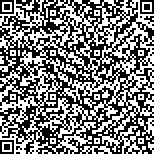| 张 密,董 倩.三阴性乳腺癌免疫治疗的研究进展[J].中国肿瘤,2020,29(8):614-620. |
| 三阴性乳腺癌免疫治疗的研究进展 |
| Research Progress of Triple Negative Breast Cancer Immunotherapy |
| 中文关键词 修订日期:2020-05-04 |
| DOI:10.11735/j.issn.1004-0242.2020.08.A010 |
|
 |
| 中文关键词: 三阴性乳腺癌 免疫治疗 过继免疫疗法 免疫检查点抑制剂 Siglec-15 |
| 英文关键词:triple-negative breast cancer immunity therapy adoptive immunotherapy immune checkpoint inhibitor Siglec-15 |
| 基金项目: |
|
| 摘要点击次数: 1608 |
| 全文下载次数: 354 |
| 中文摘要: |
| 摘 要:乳腺癌是全球女性最常见的恶性肿瘤,严重威胁着女性的身心健康。三阴性乳腺癌(triple-negative breast cancer,TNBC)作为乳腺癌的一个亚型,具有高度异质性,其发病年龄偏小、分化程度低、侵袭性高、复发率高、更易出现内脏转移、相较于其他亚型预后差,且TNBC由于雌激素受体(estrogen receptor,ER)、孕激素受体(progesterone receptor,PR)及人类上皮细胞生长因子受体2(human epithelial growth factor receptor 2,HER2)表达均为阴性,治疗上无法从内分泌治疗及抗HER2治疗中获益,目前治疗手段依然是手术、放化疗,但患者整体预后不佳,亟需其他有效治疗方法。近些年来不断有研究证实TNBC可以从免疫治疗中获益,本文在现有相关文献的基础上围绕TNBC的疫苗治疗、过继免疫疗法及CTLA-4、PD-1/PD-L1抑制剂应用等多个方面将TNBC免疫治疗的相关最新进展及目前面临的问题做一综述。 |
| 英文摘要: |
| Abstract:Breast cancer is the most common malignant tumor of women in the world,which seriously threatens women’s physical and mental health. Triple-negative breast cancer (TNBC),as a subtype of breast cancer,is highly heterogeneous,with a young age of onset,low degree of differentiation,high invasiveness,high recurrence rate and more prone to visceral metastasis,Compared with other subtypes,the prognosis is poor,and TNBC is due to estrogen receptor (ER),progesterone receptor (PR) and human epithelial growth factor receptor 2 (human epithelial growth factor receptor 2,HER2) expressions are all negative,and the treatment cannot benefit from endocrine therapy and anti-HER2 therapy. The current treatment is still surgery,radiotherapy and chemotherapy,but the overall prognosis of the patient is poor,and other effective treatments are urgently needed. In recent years,there have been continuous studies confirming that TNBC can benefit from immunotherapy. Based on the existing relevant literature,this article will make a summary focusing on the latest progress of TNBC immunotherapy and the current facets of TNBC vaccine treatment,adoptive immunotherapy and the application of CTLA-4 and PD-1/PD-L1 inhibitors. |
|
在线阅读
查看全文 查看/发表评论 下载PDF阅读器 |